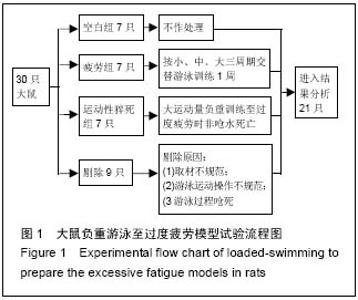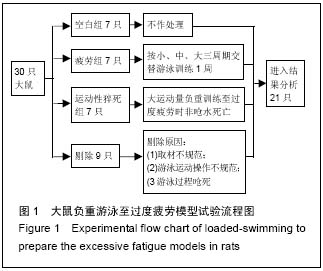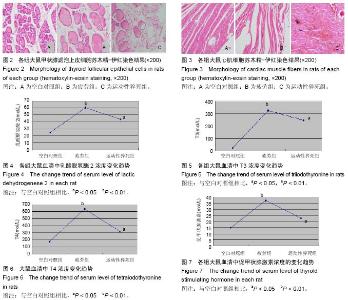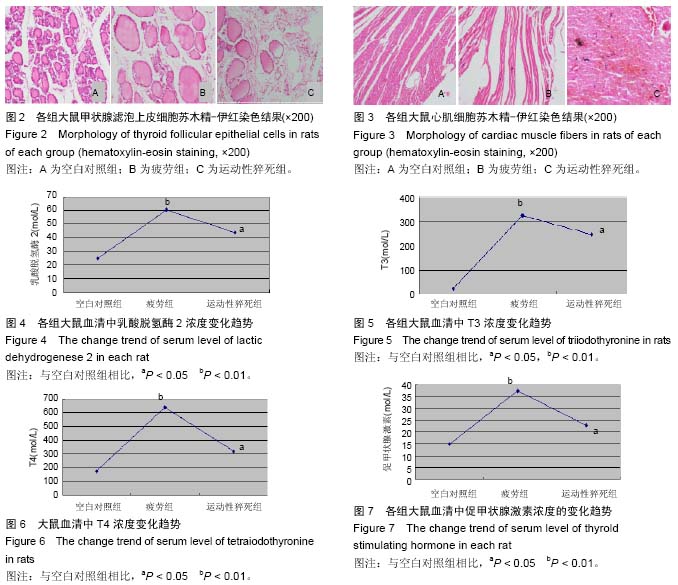| [1] 经承学,周春.猝死与遗传代谢病[J].实用儿科临床杂志, 2010,25(8):537.
[2] 徐昕,高崇玄,张丽申,等.我国运动猝死调查研究[J].中国运动医学杂志[J]1999,18(2):99-102.
[3] 朱磊,刘洪珍.运动性猝死的原因及其干预[J].中国临床康复,2005,9(8):169.
[4] 董玉福,张文星.25例学生运动性猝死特点分析[J].中国学校卫生,2014,1(25):156-158.
[5] 孙鑫.冠心病猝死的法医病理学研究[J].郑州大学学报, 2015,5(1):56-58.
[6] 陈元武.剧烈运动对人体代谢的影响[J].湖北体育科技, 1994,53(4):32.
[7] 经承学.遗传代谢病[J].实用儿科临床杂志,2007,22(8): 567-568
[8] Angle B,Burton BK.Risk of sudden death and acute life-threaten ingevents in patients with glutaric acidemia type.Mol Genet Me tab.2008;93(1):36-39.
[9] Gygax MJ, Roulet-Perez E,Meagher- Villemure K,et al. Sudden unexpected death in an infant with L-2 -hydroxyglu taricaciduria.Eur J Pediatr.2009;168(8): 957-962.
[10] 钱宁,杨艳宁.有机酸代谢障碍的研究进展[J].中国优生与遗传杂志,2003,11(4):6-8.
[11] Angdisen J, Moore VDG, Cline JM, et al. Mitochond rial trifunctional protein defects: Molecular basis and novel therapeutic app roaches.Curr Drug Targets Immune Endocr Metab Disord.2005;5(1):27-40.
[12] 张洪海,钱风雷,王晨.运动与甲状腺激素反应研究进展[J].体育科研,2008,29(2):57-61.
[13] 殷劲,蒋丽,刘钦龙.超量恢复的运动生理研究进展[M].成都:电子科技大学出版社, 2012:47-63.
[14] 殷劲,岳建兴,周进,等.糖酵解供能运动后“超量恢复区间”的研究[J].成都体育学院学报,2007,33(4):88-91.
[15] Caraccio N,Sansone C,Laughlin MH,et al. Muscle meta bolism and exercise tolerance in sub clinical hypothyroidism:a controlled trial of levothyroxine.J Clin Endocrinol Metab.2005;90(7):4057-4062.
[16] Mogul HR, Peterson S, Weinstein BI, et al. Long-term(2-4 year)weight reduction with metformin plus carbohydrate-modified diet in euglycemic, hyperinsulinemic,midlife women(Syndrome W).Heart Dis.2003;5(6):384-392.
[17] 迟素敏,裴建明,刘亚莉,等.内分泌生理学[M].西安:第四军医大学出版社, 2006:170.
[18] 张钧, 童昭岗, 黄叔怀.力竭运动对甲状腺激素代谢的影响[J],西安体育学院学报,2002,19(1):41-42,45.
[19] 李豪侠,吴晓强.老年恶性肿瘤患者血清甲状腺激素检测的意义[J] .浙江中西医结合杂志,2006,16(7):415.
[20] 张镜如,乔健天.生理学[M].4版.北京:人民卫生出版社, 1978:387-393.
[21] Holtzhausen. LM, Noakes. TD. The prevalence and significanceof post- exercisehypotension ultramarathon runners. Med Sci Sports Exerc.1995;(27):1595.
[22] 黄先玫,康曼丽.甲状腺素与心血管疾病[J]. 国外医学:心血管疾病分册, 2000, 27(4):199- 2011.
[23] 谢敏豪,冯伟权,严翊.运动内分泌学[M].北京:北京体育大学出版社,2008:84-87.
[24] 何天培,顾景范,高兰兴.牛磺酸对应激大鼠甲状腺激素代谢的影响[J]. 营养学报,1998, 20(4):413- 415.
[25] 张钧,许豪文,黄叔怀,等.力竭运动对大鼠心肌线粒体游离钙及磷脂酶A2的影响[J].中国运动医学杂志,1998,17(1): 26-27.
[26] 黄宛.临床心电图学[M]. 5版.北京:人民卫生出版社,1998: 1-566.
[27] 段玉斌,马恒.下丘脑-垂体-甲状腺功能的调节,内分泌生理学[M]. 西安:第四军医大学出版社,2006:177-178.
[28] McAllister RM,Sansone JC,Laughlin MH.Effects of hyperthyroidism on muscle blood flow during exerise in the rat.Am J Physiol.1999;268(2):330-335.
[29] 刘静,石武祥,王金勇,等.云南不明原因猝死病区人群生命质量影响因素初探[J].中国疾病控制杂志,2014,8(10):2 44-245.
[30] 郭婷婷.过度疲劳状态下连续负重游泳大鼠心肌Bax、Bcl-2、LDH-2变化规律的研究[J].成都体育学院,2015, 6(5):3-6.
[31] 王莎莎.浅析田径运动训练中过度疲劳及预防措施[J].民营科技,2016,3(20):11-14.
[32] 陈灏珠.实用内科学[M].北京:人民卫生出版社,1998: 1027-1028. |



